The Bagpipe Society
Tools of the Trade
Pipe-making generally falls into two categories: industrial and peasant. The former can be seen with such instruments as the Highland pipes and Northumbrian smallpipes, and dare I say it, the work of such as Jon Swayne. The instruments themselves are examples of precision engineering, beautifully made on the whole. The second category includes basically homemade instruments, often made by the player themselves or at least by a similar person who has discovered a lucrative sideline making similar instruments for others. I’d class my own work in this category…
So don’t go looking in my workshop for anything even remotely high-tech. My lathe is a cheap, bottom of the range Record suitable for very little other than spindle turning. This is not a problem as pipe-making is fairly straight forward spindle turning for the most part; and I use just two woodturning tools—a spindle gauge and a parting chisel, and that’s it. For boring, I use a drill chuck mounted in the lathe head and use ordinary twist drills, the odd flat bit and one saw tooth forstner bit for boring out the stocks.
But one thing I do have which has been invaluable over the years is a simple wooden jig I knocked up for doing the finger holes on my Welsh pipe chanters and pibgorns. Originally I made it thinking I’d be able to mount the chanter in it and drill through guide holes to get accurately placed fingerholes. However I soon found out that, due to the tendency for the smaller diameter twist drill bits to easily be deflected off to the side, I’d end up with fingerholes seriously out of alignment. So I now use the jig just to hold the chanter and mark the fingerhole position with a bradawl through the holes in the jig before drilling them freehand on a pillar drill.
It is also very useful for making sure that the thumbhole is exactly on the back of the chanter opposite the fingerholes. Even a slight inaccuracy here is noticeable and extremely annoying to both maker and player.
The pictures show the jig in use for a square section pibgorn body rather than a turned chanter. With the latter I also use the jig to clamp the chanter steady while I file away the finger indentations.
All in all an invaluable piece of kit even it is a bit crude.
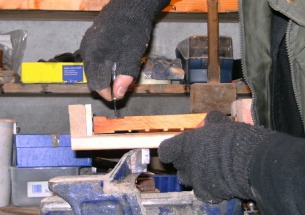
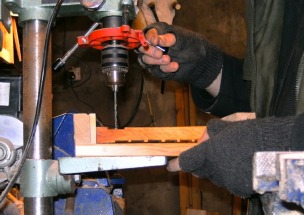
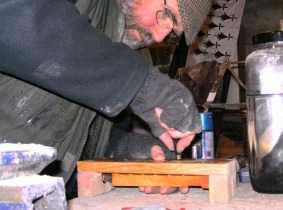
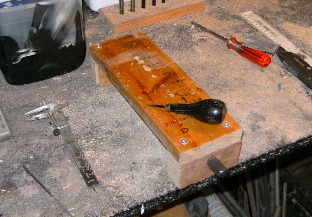
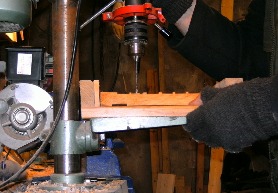
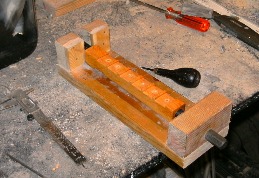
- Data Processing Notice (GDPR)
-
@BagpipeSociety on X (formally known as Twitter)
-
TheBagpipeSociety on Instagram
-
 BagpipeSociety on Facebook
BagpipeSociety on Facebook
Something wrong or missing from this page? Let us know!
